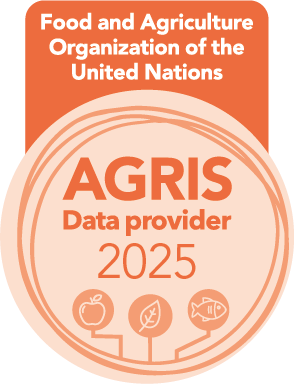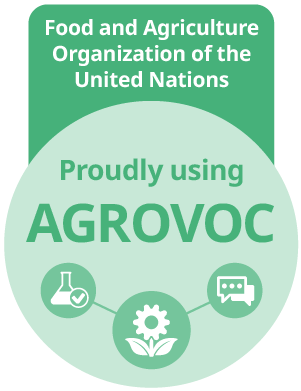Assessment of Dietary Habits of Undergraduate Students with Acne
Dietary Habits of Students with Acne
DOI:
https://doi.org/10.54393/df.v4i02.91Keywords:
Propionibacterium acnes, Dietary Habits, StudentsAbstract
Acne vulgaris is one of the most widespread and distressing chronic skin diseases worldwide. It affects about 9.4% of the world’s population during a specific period of their life. Several underlying risk factors like poor dietary habits, family history and poor hygiene are known for acne development. Objective: To assess the dietary habits of undergraduate students with acne. Methods: It was a cross-sectional study including 173 undergraduate students from 3 colleges of Akhtar Saeed Group located at Canal Campus, Lahore. A self-designed questionnaire was used to assess dietary habits of acne participants after getting their written consent. The collected was analyzed by SPSS. Results: The results of this study showed that 54% of selected respondents had acne, with the majority having oily skin and females. The consumption of high glycemic index fruits, junk foods, oily foods, sugary foods, especially dark chocolates, sweetened beverages and milk was found to very high among the acne respondents. They consumed vegetables and whole grains very occasionally. Conclusions: This study concluded that diet has a very high impact in causing acne. Further studies are needed to be done in order to find a more comprehensive link between acne and diet.
References
Contassot E and French LE. New insights into acne pathogenesis: propionibacterium acnes activates the inflammasome. Journal of Investigative Dermatology. 2014 Feb; 134(2): 310-3. doi: 10.1038/jid.2013.505.
Hay RJ, Johns NE, Williams HC, Bolliger IW, Dellavalle RP, Margolis DJ, et al. The global burden of skin disease in 2010: an analysis of the prevalence and impact of skin conditions. Journal of Investigative Dermatology. 2014 Jun; 134(6): 1527-34. doi: 10.1038/jid.2013.446.
Abbas H, Awan J, Ishfaq M. Acne Vulgaris in University Students: Prevalence, Knowledge and Lifestyle Association. Pakistan Journal of Surgery and Medicine. 2021 Jan; 1(4): e240-e. doi: 10.37978/pjsm.v1i4.240.
Stewart TJ and Bazergy C. Hormonal and dietary factors in acne vulgaris versus controls. Dermato-endocrinology. 2018 Jan; 10(1): e1442160. doi: 10.1080/19381980.2018.1442160.
Kraft J and Freiman A. Management of acne. Canadian Medical Association Journal. 2011 Apr; 183(7): E430-5. doi: 10.1503/cmaj.090374.
Ulvestad M, Bjertness E, Dalgard F, Halvorsen JA. Acne and dairy products in adolescence: results from a Norwegian longitudinal study. Journal of the European Academy of Dermatology and Venereology. 2017 Mar; 31(3): 530-5. doi: 10.1111/jdv.13835.
Burris J, Rietkerk W, Woolf K. Relationships of self-reported dietary factors and perceived acne severity in a cohort of New York young adults. Journal of the Academy of Nutrition and Dietetics. 2014 Mar; 114(3): 384-92. doi: 10.1016/j.jand.2013.11.010.
Chalyk N, Klochkov V, Sommereux L, Bandaletova T, Kyle N, Petyaev I. Continuous dark chocolate consumption affects human facial skin surface by stimulating corneocyte desquamation and promoting bacterial colonization. The Journal of Clinical and Aesthetic Dermatology. 2018 Sep; 11(9): 37.
Alshammrie FF, Alshammari R, Alharbi RM, Khan FH, Alshammari SK. Epidemiology of acne vulgaris and its association with lifestyle among adolescents and young adults in Hail, Kingdom of Saudi Arabia: a community-based study. Cureus. 2020 Jul; 12(7): 1-. doi: 10.7759/cureus.9277.
Kwon HH, Yoon JY, Hong JS, Jung JY, Park MS, Suh DH. Clinical and histological effect of a low glycaemic load diet in treatment of acne vulgaris in Korean patients: a randomized, controlled trial. Acta dermato-venereologica. 2012 Mar; 92(3): 241-6. doi: 10.2340/00015555-1346.
Williams HC, Dellavalle RP, Garner S. Acne vulgaris. The Lancet. 2012 Jan; 379(9813): 361-72. doi: 10.1016/S0140-6736(11)60321-8.
Huang X, Zhang J, Li J, Zhao S, Xiao Y, Huang Y, et al. Daily intake of soft drinks and moderate-to-severe acne vulgaris in Chinese adolescents. The Journal of Pediatrics. 2019 Jan; 204: 256-62. doi: 10.1016/j.jpeds.2018.08.034.
Di Landro A, Cazzaniga S, Parazzini F, Ingordo V, Cusano F, Atzori L, et al. Family history, body mass index, selected dietary factors, menstrual history, and risk of moderate to severe acne in adolescents and young adults. Journal of the American Academy of Dermatology. 2012 Dec; 67(6): 1129-35. doi: 10.1016/j.jaad.2012.02.018.
Minerva P, Rosalina L, Astuti M, Yuniarti E. Fat Intake Comparison Based on Acne Vulgaris Gradation in Beauty Vocational High School Girls in Padang City. 2nd International Conference on Cullinary, Beauty and Tourism. 2019 Sep: 9-10. doi:
Ismail NH, Manaf ZA, Azizan NZ. High glycemic load diet, milk and ice cream consumption are related to acne vulgaris in Malaysian young adults: a case control study. BMC Dermatology. 2012 Dec; 12: 1-8. doi: 10.1186/1471-5945-12-13.
Kanwal S, Zaman MH, Irfan N. Factors Associated with Prevalence of Acne under the age of 25 years in the skin Outdoor Patient Department of Allied Hospital, Faisalabad. Pakistan Journal Of Medical & Health Sciences. 2018 Jan; 12(1): 598-600.
Manisha T, Kumar MS, Nareshrao DP, Gaurav V. Faulty Dietary Habits vis-à-vis Acne Vulgaris: An Epidemiological Study. International Journal of Ayurvedic Medicine. 2015 Jul; 6(3): 237-42. doi: 10.47552/ijam.v6i3.639.
Kim J, Ko Y, Park YK, Kim NI, Ha WK, Cho Y. Dietary effect of lactoferrin-enriched fermented milk on skin surface lipid and clinical improvement of acne vulgaris. Nutrition. 2010 Sep; 26(9): 902-9. doi: 10.1016/j.nut.2010.05.011.
Smith RN, Mann NJ, Braue A, Mäkeläinen H, Varigos GA. A low-glycemic-load diet improves symptoms in acne vulgaris patients: a randomized controlled trial. The American Journal of Clinical Nutrition. 2007 Jul; 86(1): 107-15. doi: 10.1093/ajcn/86.1.107.
Jung JY, Yoon MY, Min SU, Hong JS, Choi YS, Suh DH. The influence of dietary patterns on acne vulgaris in Koreans. European Journal of Dermatology. 2010 Nov; 20(6): 768-72. doi: 10.1684/ejd.2010.1053
Downloads
Published
Issue
Section
License
Copyright (c) 2023 DIET FACTOR (Journal of Nutritional & Food Sciences)

This work is licensed under a Creative Commons Attribution 4.0 International License.
This is an open-access journal and all the published articles / items are distributed under the terms of the Creative Commons Attribution License, which permits unrestricted use, distribution, and reproduction in any medium, provided the original author and source are credited. For comments









